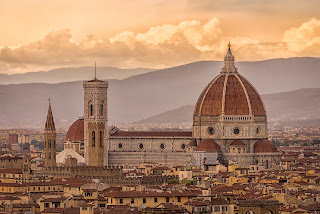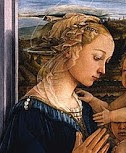NEW - Francesca Bertini - silent movie actress
Diva described as Italy’s first film star
The actress Francesca Bertini, one of the three so-called divas of Italy’s silent movie era, died on this day in 1985 in Rome at the age of 93. Between her screen debut in 1907 and her effective retirement in 1935, Bertini appeared in 139 titles. Her last appearance came in 1976, at the age of 84, when the director Bernardo Bertolucci persuaded her to accept a cameo in his epic historical drama, Novecento (1900). Bertini, Lyda Borelli and Pina Menichelli were regarded as Italy’s three biggest female stars of the silent movie years and though Borelli came to be seen as the most talented of the three, there is no doubt that Bertini was a woman of outstanding ability. She has been described as Italy's first film star. Her most famous film, Assunta Spina, a 1915 production, not only saw her take the title role but write scripts and direct many of the scenes, introducing a level of realism into the performances that was ahead of its time. Bertini’s birth was registered in 1892 at an orphanage in Florence as Elena Taddei, although it is unclear whether Taddei was the name of her father. Her mother was said to be Adelina di Venanzio Fratiglioni, an unmarried woman who was thought to have been an actress herself. Read more…
_________________________________________________________
Piero Dusio - sportsman and entrepreneur
His Cisitalia company revolutionised automobile design
The footballer, racing driver and businessman Piero Dusio was born on this day in 1899 in Scurzolengo, a village in the hills above Asti, in Piedmont. Dusio made his fortune in textiles but it is for his postwar venture into car production that he is most remembered. Dusio’s Cisitalia firm survived for less than 20 years before going bankrupt in the mid-1960s but in its short life produced a revolutionary car - the Cisitalia 202 - that was a gamechanger for the whole automobile industry. Dusio played football for the Turin club Juventus, joining the club at 17 years old, and was there for seven years before a knee injury forced him to retire at the age of only 24, having made 15 appearances for the senior team, four of them in Serie A matches. He kept his connection with the club and from 1942 to 1948 was Juventus president. In the short term, though, he was forced to find a new career. He took a job with a Swiss-backed textile firm in Turin as a salesman. He took to the job immediately and made an instant impression on his new employers, selling more fabric in his first week than his predecessor had in a year. Within a short time he had been placed in charge of sales for the whole of Italy. Read more…
__________________________________________________________
Execution of former King of Naples
Joachim Murat, key aide of Napoleon, shot by firing squad
Joachim Murat, the French cavalry leader who was a key military strategist in Napoleon's rise to power in France and his subsequent creation of an empire in continental Europe, was executed on this day in 1815 in Pizzo in Calabria. The charismatic Marshal was captured by Bourbon forces in the coastal town in Italy's deep south as he tried to gather support for an attempt to regain control of Naples, where he had been King until the fall of Napoleon saw the throne returned to the Bourbon king Ferdinand IV in May 1815. Murat was held prisoner in the Castello di Pizzo before a tribunal found him guilty of insurrection and sentenced him to death by firing squad. The 48-year-old soldier from Lot in south-west France had been an important figure in the French Revolutionary Wars and gained recognition from Napoleon as one of his best generals, his influence vital in the success of Napoleon's campaigns in Egypt and Italy and in victories against the numerically superior Prussians and Russians. He was a flamboyant dresser, going into battle with his uniform bedecked in medals, gold tassels, feathers and shiny buttons. Yet for all his peacock tendencies, he was renowned as a bold, brave and decisive leader. Read more…
__________________________________________________________
Mario Buda - anarchist
Prime suspect in Wall Street Bombing
Mario Buda, the anarchist suspected but never convicted of the 1920 Wall Street bombing, was born on this day in 1884 in Savignano sul Rubicone, a town in the Emilia-Romagna region, about 90km (56 miles) southeast of Bologna. Some 38 people were killed, with hundreds more injured, when a horse-drawn cart packed with explosives exploded close to the New York Stock Exchange building on the famous thoroughfare. Buda was identified by a blacksmith who had rented him the horse and Federal agents began an investigation. The Italian, who had emigrated to the United States in 1907, was known to the police after being arrested previously in connection with a double-murder in the town of Braintree, Massachusetts. He had escaped from custody on that occasion and evaded detection again, boarding a ship to return to Italy before he could be questioned over the bombing. Born into a family of modest means, Buda led an unsettled youth. He was arrested for robbery at the age of 15 and later served a jail term after being indicted on a charge of noise pollution at night. On his release, he was apprenticed to a shoemaker but remained restless. Read more...
___________________________________________________________
Claudius - Roman emperor
Suspicious death of leader who conquered Britain
The Roman emperor Claudius, whose reign was notable among other things for turning Britain into a province of the Empire, died on this day in 54 AD. It is a widely held view that he was murdered, by poisoning, on the orders of his scheming fourth wife, Julia Agrippina, the mother of his successor, Nero, in one of the power struggles that at the time were ever present. It is thought he ingested some poisonous mushrooms that his taster, the eunuch Halotus, had assured him were safe to eat, either at an official banquet on the evening of October 12 or at his first meal of the following day. When Claudius began to show signs of distress, one version of the story is that his physician, Xenophon, pushed a feather into his throat, ostensibly to make him vomit, but actually to ensure that he did not recover by administering more poison, with which he had coated the feather. There have been arguments that the poisoning story was nonsense and that, at 63, Claudius died from natural causes related to ageing. Yet Agrippina - sometimes referred to as Agrippina the Younger - seemed to have had a clear motive. Read more…

























